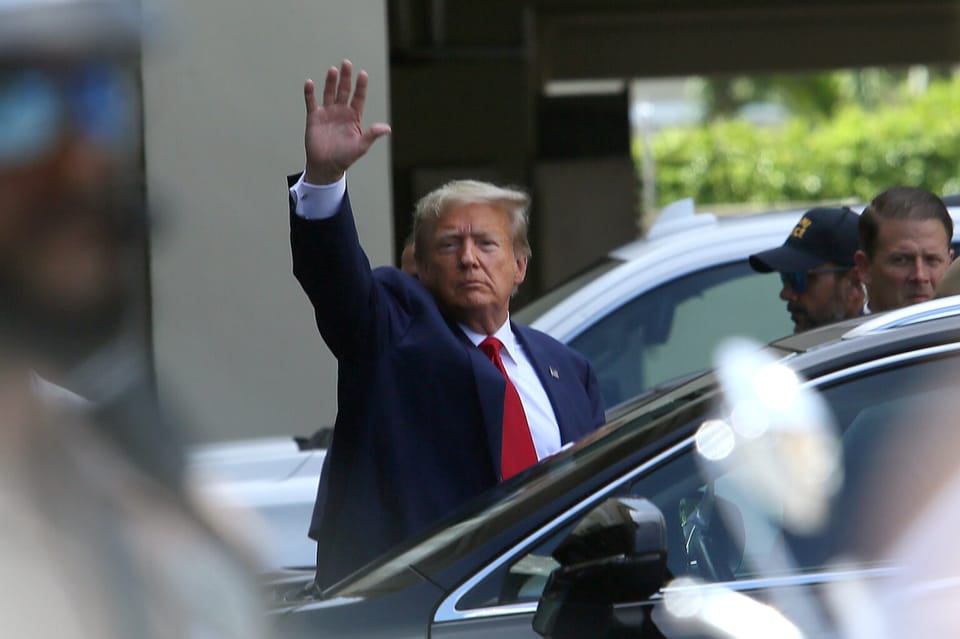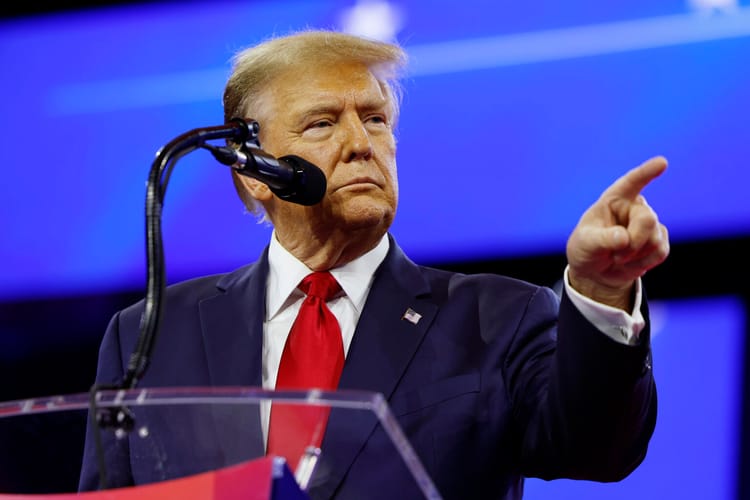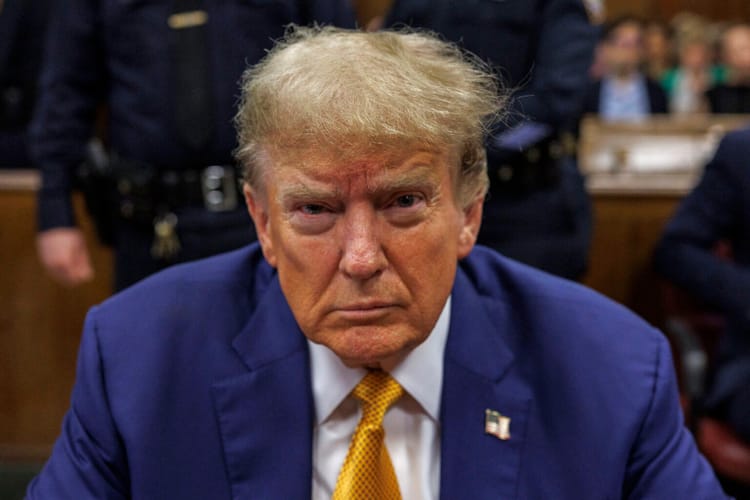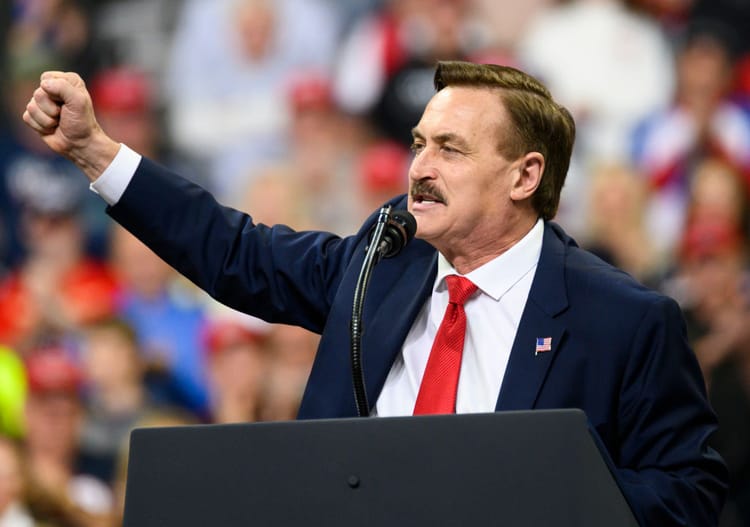‘Fueled by lies,’ Trump charged with seeking to overturn 2020 election

By Jennifer Shutt, Minnesota Reformer
WASHINGTON — A federal grand jury in Washington, D.C., indicted Donald Trump on Tuesday, alleging that Trump and co-conspirators attempted to subvert the 2020 election to keep the former president in power through a series of illegal actions that culminated in the Jan. 6, 2021, attack on the U.S. Capitol.
The former president faces four charges in U.S. District Court for the District of Columbia stemming from his actions following the November 2020 election, including conspiracy to defraud the United States; conspiracy to obstruct an official proceeding; obstruction of, and attempt to obstruct, an official proceeding; and conspiracy against rights.
“Each of these conspiracies — which built on the widespread mistrust the Defendant was creating through pervasive and destabilizing lies about election fraud — targeted a bedrock function of the United States federal government: the nation’s process of collecting, counting and certifying the results of a presidential election,” the indictment states.
Special Counsel Jack Smith said during a brief statement on Tuesday evening that Trump’s lies about election fraud caused the “unprecedented assault on the seat of American democracy” on Jan. 6.
“As described in the indictment, it was fueled by lies,” Smith said. “Lies by the defendant aimed at obstructing a bedrock function of the U.S. government.”
Smith said he would seek a speedy trial, so the evidence prosecutors have gathered can be tested in court. He added that investigations into other individuals, possibly including six unnamed co-conspirators listed in the indictment, would continue. He did not take questions.
The indictment lists Trump’s false statements about election results in Arizona, Georgia, Michigan, Nevada, New Mexico, Pennsylvania and Wisconsin.
The 45-page indictment says Trump knew that his statements about the election were false. Despite declarations from state leaders and elections officials that no fraud occurred, Trump continued to say vote totals were in his favor and worked with co-conspirators to influence state legislators to decertify results, according to the indictment.
“Despite having lost, the Defendant was determined to remain in power,” the indictment reads. “So for more than two months following election day on November 3, 2020, the Defendant spread lies that there had been outcome-determinative fraud in the election and that he had actually won.”
“These claims were false, and the Defendant knew that they were false,” it reads.
The indictment later adds: “These prolific lies about election fraud included dozens of specific claims that there had been substantial fraud in certain states, such as that large numbers of dead, non-resident, non-citizen or otherwise ineligible voters had cast ballots, or that voting machines had changed votes for the Defendant to votes for Biden.”
Trump is leading the field of Republicans vying to become the party’s nominee for president in the 2024 election. The first GOP primary debate is scheduled for later this month. Republicans largely rebuked the indictment, with many dismissing it as partisan.
In a statement from his campaign, Trump denied wrongdoing and called his prosecution politically motivated.
“This is nothing more than the latest corrupt chapter in the continued pathetic attempt by the Biden Crime Family and their weaponized Department of Justice to interfere with the 2024 presidential election, in which President Trump is the undisputed front-runner, and leading by substantial margins,” a statement from the Trump campaign read.
The plans for fake electors
The indictment focuses on plans by Trump and co-conspirators — four unnamed attorneys, a U.S. Justice Department official and a political consultant — to replace legitimate electors in seven key states, which Joe Biden in fact won, with fraudulent electors pledged to Trump.
Federal prosecutors listed five steps Trump took, escalating as each effort failed to bring his desired result.
According to the indictment, Trump and his co-conspirators pressured state legislators and election officials in key states to switch the legitimate election results in those states from Biden to Trump.
Trump and his team organized fraudulent slates of electors, which they sought to have replace the legitimate Biden electors, according to the indictment.
Trump ordered “sham” U.S. Justice Department investigations into election crimes in certain states, and considered having DOJ officials send letters outlining supposed concerns with the elections in those states. Those concerns could then be used as a pretext to advance the fraudulent electors, the indictment reads.
Trump and his co-conspirators then pressured Vice President Mike Pence to use his ceremonial role to certify the election results on Jan. 6 to authenticate the fraudulent electors, the indictment reads.
When Pence, who did not have the legal authority to replace the electors, declined to participate, Trump repeated to supporters who had gathered in Washington that Pence did have the authority to change the election result and “directed them to the Capitol to obstruct the certification proceeding,” the indictment said.
As the crowd turned violent, Trump and his co-conspirators used the chaos to continue launching claims of election fraud and attempting to convince members of Congress to delay the proceeding, prosecutors alleged.
False statements about election fraud
Trump “pushed officials in certain states to ignore the popular vote; disenfranchise millions of voters; dismiss legitimate electors; and ultimately, cause the ascertainment of and voting by illegitimate electors in favor of the Defendant,” the indictment says.
Trump and his co-conspirators worked to establish fraudulent electors in seven states by “attempting to mimic the procedures that the legitimate electors were supposed to follow under the Constitution and other federal and state laws,” according to the indictment.
Those false electors in Arizona, Georgia, Michigan, Nevada, New Mexico, Pennsylvania and Wisconsin met on the same days as legitimate electors, casting fake votes for Trump and then signing certificates where they falsely claimed they were the actual electors.
“Some fraudulent electors were tricked into participating based on the understanding that their votes would be used only if the Defendant succeeded in outcome-determinative lawsuits within their state, which the Defendant never did,” reads the indictment.
Those false election certificates were then sent to the vice president and other government officials, in an attempt for them to be counted instead of the legitimate electors when Congress convened on Jan. 6, 2021 to certify the vote.
That morning an associate of Trump’s, who isn’t named in the indictment, worked to get false election certificates from Michigan and Wisconsin to an unnamed U.S. senator, who was supposed to deliver those to Pence, according to the indictment.
A staffer for Pence later rejected efforts to put those false electors into the vice president’s hands, according to the indictment.
Trump’s pressure on Pence
The indictment details Trump’s efforts to “enlist” Pence to alter the election results, using Trump and his co-conspirators’ fraudulent slate of electors.
The vice president has a ceremonial role in certifying presidential election results.
When Pence remained unconvinced by the scheme, Trump began rallying supporters to amass in Washington, D.C., on the day Pence would preside over the certification, the indictment states.
The indictment recounts Trump’s Dec. 19, 2020, post on Twitter, in which he wrote “Big protest in D.C. on January 6th. Be there, will be wild!”
Days later, on Dec. 23, Trump re-posted a memo titled “Operation ‘PENCE’ CARD,” that falsely stated Pence could disqualify electors from the states where Trump falsely claimed voter fraud. That same day, a person identified in the indictment as “co-conspirator 2,” identified as John Eastman by his attorney, circulated a memo detailing plans for Pence to unlawfully declare Trump the winner.
The indictment details multiple phone calls and conversations in which Trump pressures the vice president, including a call from Pence to wish the president “Merry Christmas” that quickly turned into Trump asking Pence to reject electoral votes on Jan. 6.
“‘You know I don’t think I have the authority to change the outcome,’” Pence told Trump, according to the indictment.
The two spoke by phone again on New Year’s Day when Trump “berated” Pence and told him, “You’re too honest” after the vice president opposed a lawsuit seeking to give him authority to reject or return votes to the states.
Within hours of the phone call, Trump again took to Twitter to promote the rally. “‘The BIG Protest Rally in Washington, D.C., will take place at 11:00 A.M. on January 6th. Locational (sic) details to follow. StopTheSteal!,’” according to the indictment.
The pressure campaign continued into the early days of January, including a meeting on Jan. 4 during which Trump and “co-conspirator 2” tried to convince Pence, his chief of staff and his legal counsel, that Pence should reject or return to the states Biden’s legitimate electoral votes.
Pence’s notes from the meeting detail Trump’s false statements he “won every state by 100,000s of votes,” according to the indictment.
Despite acknowledgement from both “co-conspirator 2” and Trump’s senior advisor that the plan would not stand up in court, Trump ordered a second meeting on Jan. 5 between Pence’s staff and Eastman.
On each meeting occasion, Trump’s senior advisor and Pence’s counsel respectively expressed concern of “riots in the streets,” and of a “disastrous situation” where the election might “have to be decided in the streets.”
Also on Jan. 5, Trump met with Pence alone and warned him that he “would have to publicly criticize him,” the indictment states. Pence’s chief of staff, concerned for the vice president’s safety, alerted his Secret Service detail.
As Trump’s supporters amassed at the Ellipse on Jan. 6, the then-president told them “I hope Mike is going to do the right thing. I hope so. I hope so. Because if Mike Pence does the right thing, we win the election,” the indictment recounts.
Trump continued to fire up the crowd, falsely telling them that the Pennsylvania Legislature wanted “to recertify their votes.”
“But the only way that can happen is if Mike Pence agrees to send it back,” he told them.
They began to chant “send it back.”
Trump continued, telling the crowd “we fight like hell. And if you don’t fight like hell, you’re not going to have a country anymore.”
“During and after the Defendant’s remarks, thousands of people marched toward the Capitol,” the indictment states.
Third indictment for Trump
The allegations mirror conclusions that the U.S. House Select Committee to Investigate the January 6, 2021, Attack on the U.S. Capitol made following the panel’s two-year probe.
The Democratic-led committee placed Trump at the center of the attack, saying his and his close allies’ consistent lies about the election and voicing of conspiracy theories inspired the armed insurrection.
The U.S. House, then under Democratic control, impeached Trump in the waning days of his presidency for inciting the attack. A majority of the U.S. Senate — 57 senators, including seven Republicans — voted to convict him, but fell short of the two-thirds required for conviction.
The indictment is the third for Trump this year.
The former president also faces criminal charges in New York state, where he’s accused of falsifying business records by using campaign funds to cover up an affair, and in federal court in Florida on allegations he kept classified materials after he left office.
He has pleaded not guilty in both other cases.
A sweeping Georgia 2020 election interference probe also could lead to high-profile criminal indictments being handed down for Trump and potentially others in Fulton County Superior Court.
Minnesota Reformer is part of States Newsroom, a network of news bureaus supported by grants and a coalition of donors as a 501c(3) public charity. Minnesota Reformer maintains editorial independence. Contact Editor Patrick Coolican for questions: info@minnesotareformer.com. Follow Minnesota Reformer on Facebook and Twitter.





Member discussion